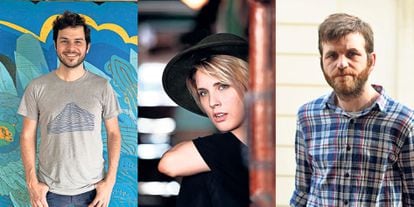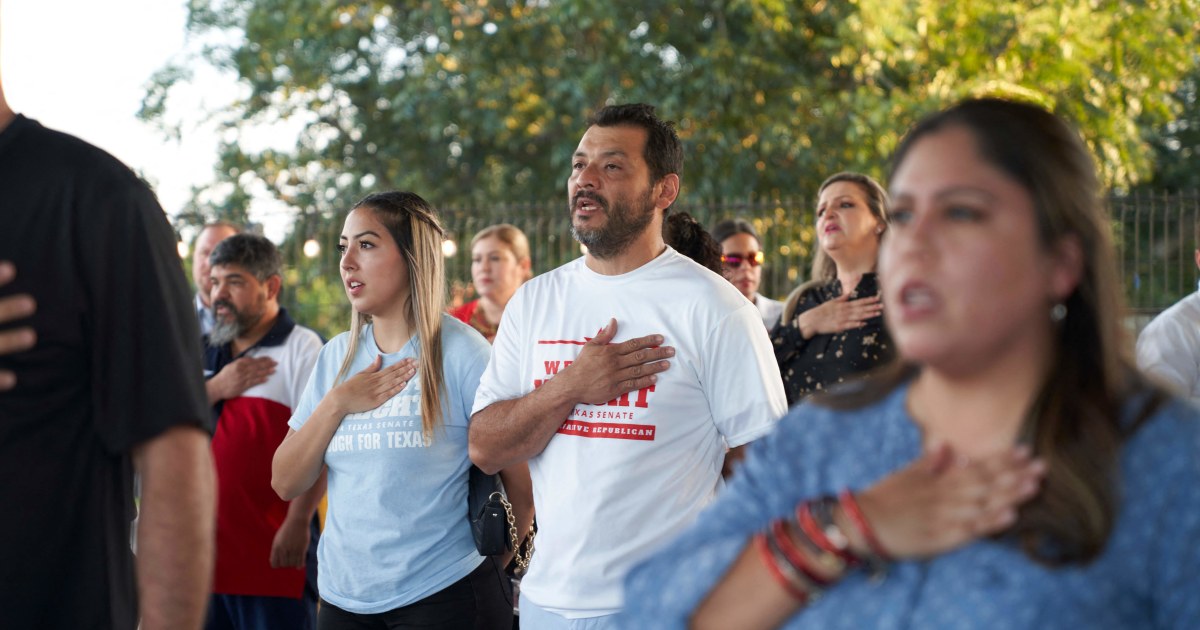Every night someone treats themselves to a bedtime story.
In Latin America, this rite takes on new accents.
The magical and fantastic realism of other days flow towards the Gothic and the strange, turned into lenses to explore the links, the ambiguous and the violence of a stormy present.
The story looks and looks without exoticism.
If there is manners, it is
techno,
and the genre corset does not contain the overflow of the imagination, while the writers begin to have a long-deserved place.
The Latin American tale has made news again.
The dangers of smoking in bed
, by Mariana Enriquez (Anagrama), 12 stories about the terror that can lurk in daily life, was a finalist for the International Booker 2021, a showcase of global prestige. The recent
Vindictas
(Foam Pages), an anthology of 20 20th century storytellers, illuminated the talents of marginalized authors, challenging a predominantly male canon. American storytellers also make up the second list of under-35s proposed by
Granta
magazine
as the best young storytellers in Spanish.
In them the editor Valerie Miles stands out, you can read both the influence of Roberto Bolaño and that of Sylvia Plath.
Heirs of a polyphonic tradition that includes Juan Rulfo and Clarice Lispector, Juan José Saer and Armonía Somers, what territories do young Latin American storytellers feel their own?
Overlapping architecture
I disbelieve the generational looks, but they are read without fail. They claim the freedom to experiment with various genres (from suspense to
Anglo-Saxon
new weird
) and do not fit into any. Translations allow them to frequent literatures from other latitudes like never before. They mix and feel as if they wanted to add an unforgettable texture to the orality of their stories. Some use inclusive language in their works and all closely follow literature written by women. They are active on social media, which they use to promote their fictions. Omnivores, they feed on series, cinema, theater, video games and comics as much as they do on books, and when narrating they can include a QR code that refers to a concert.
Aniela Rodríguez, José Ardila and Liliana Colanzi (Photography of Liliana Colanzi by José Nicolini).
Chekhov, Borges and Mansfield did not succumb to the seduction of the novel, but can a writer dedicate himself today to writing only stories? “Novelists are never asked: why do you write a novel and not a story or poetry? The hegemony of the novel is implicit in the face of which the story has to justify its existence ”, defines Liliana Colanzi (Bolivia, 1981), translated into five languages. His name is one of the first to emerge when talking about current Latin American stories. Award-winning author of four short story books, PhD in Comparative Literature from Cornell University and professor of Latin American Literature at that institution, in her writing Colanzi explores and blurs the edges of the fantastic. Their stories can be set in Ithaca, Paris or Mars and summon ghosts, aliens, urban or rural universes,legends or stories of the future with their own originality and accent. "I rarely choose a topic," says the author of
Our dead world
(Eternal Cadence).
“What I'm after is an image or a rhythm, and the story reveals itself to me from there.
I mix anachronistic elements, out of place, with other more contemporary and futuristic;
I like to think of my stories as
cholets
, that traditional Bolivian architecture where dissimilar and even contradictory components overlap ”.
Colanzi: “Novelists are never asked why they write a novel and I don't tell.
Hegemony is implicit "
His poetics are found in the films of Tarkovski and Apichatpong Weerasethakul ("they seem emanations from the unconscious and are full of enigmatic and beautiful images") and in various writers such as Rubem Fonseca, Denis Johnson, Rodolfo Fogwill, Felisberto Hernández and Silvina Ocampo, capable of "Constantly reinvent what we understand by story". To them, says Colanzi, he always comes back to steal things.
José Ardila (Colombia, 1985), one of the authors proposed by
Granta
, makes literature with a foreign gaze in his own land. “I was born in a town in the Caribbean, Chigorodó, and I have lived for almost 20 years in Medellín. My stories have to do with the feeling of not belonging to those places. They are stories about the town that I remember, that I hate and love, and about this city that has given me so much and that I frequently abhor, ”says the author of the stories of
Divagations inside a whale
and
Book of Boredom
, in the that humor and the unexpected color lives condemned to the curse of boredom.
Ardila believes that today more stories are being written than ever in Latin America due to the influence of workshops and master's degrees in creative writing. “From so much studied, it is thought that the story has already been invented and is very similar to that of the American tradition that comes from Hemingway and Carver: a story based on silence. I like more stories that go overboard, like Andrés Caicedo's. That they base almost all their value not on what they stop saying, but on how they say what they say, even if they overflow ”, he defines. While writing her first novel, about a phony who sets up a cult influenced by Eastern religions, Ardila underlines the traces of manga in her writing. “There is something that the Japanese do well in their comics and I like to think that I learn from that: rhythm and structure. The idea of being boring when they read me terrifies me ”.
Experimentation as DNA
The vitality of the Latin American short story owes a lot to festivals (Centroamérica Cuenta, Filba…), which even in a pandemic offer discussion sessions and writing laboratories, and to independent publishers, more sensitive to new voices than large groups.
For 22 years, the Madrid publisher Juan Casamayor has campaigned for this cause from Pages de Espuma, a label dedicated to the story.
Based on his experience, he warns about the difficulty of encompassing 19 such diverse literatures: “Talking about the 'Latin American story' is as complex as talking about the 'European novel'.
Which one?
The Norwegian police?
The Italian realist novel?
What are we talking about?".
However, there are channels. Experimentation as DNA and two great thematic nuclei: arguments that collect the impoverished and convulsed life of Latin American societies —the works of Antonio Ortuño, Mexican; The Ecuadorian María Fernanda Ampuero and the Brazilian Geovani Martins are eloquent cases — and a record of the unusual, ranging from uneasiness and restlessness to terror and darkness. “There is an arch from the Andean Gothic to the Mexican Gothic. Is that space something fantastic or is it feeding on a popular folk heritage, artistically elaborated as Mónica Ojeda does in
Las voladoras? ”
Asks Casamayor. To those who claim that the story does not sell, the editor responds with the 22 editions of
Siete casas vacías
, by Argentine Samanta Schweblin.
Downey: “The stories are pure vertigo.
They can tell a life in two pages or turn the world in a paragraph "
Each age metabolizes influences in its own way.
Ricardo Piglia (Buenos Aires, 1941-2017) explained his enthusiasm for American writers as a reaction to the weight of Borges and Cortázar, “who wreaked havoc” on the writers of their generation.
In June, on the 35th anniversary of the death of the author of
El Aleph
, Patricio Pron encouraged, instead, to study Borgian traces in today's successful Latin American Gothic.
“There is no need to kill the father.
Nobody wants to kill Mario Vargas Llosa because he is already read as a classic, ”explains Casamayor.
Not everything is city or versions of the fantastic. The rural, its speech and its temporality ruled by nature frame the stories of
Trout belly up
, by Rodrigo Fuentes (Guatemala, 1984). Those seven inaugural stories that follow Henrik, a Norwegian dealing with the jungle, narco and the inclemency of the wild, originally published in 2017, earned the author translations into English and French and was chosen by the Hay Festival as one of writers under 40 should not lose sight of. "I'm interested in the characters," says Fuentes, whose creatures cross from one story to another, inviting us to read them like a splintered novel. "It happened only after bringing them together and after seven years of writing," he deepens. “The emotional and formal ties rose to the surface, connecting unique universes. Although texts always change, I feel that I would have betrayed or falsified something important in writing by presenting this book as a novel.
Augusto Monterroso, for his rigor without formality, and Angela Carter, sensual and terrifying at the same time, are the writers to whom he returns. “I have never communed with Philip K. Dick's notion that the tale is about the crime and the criminal's novel. A first refutation of this idea was the reading of the stories by Onetti and Rulfo ”, defines the author, who works as a university professor in the United States. Getting uprooted and working in another language are common stations for many Latin Americans.
Violence tattooed Fuentes' second book, to be published by Sophos this year:
“Relief Map
is a novel that I always wanted to write and that I would rather not have lived.
It has to do with the links between the political history of Guatemala and my family;
a center of gravity is the murder of my grandfather in 79 ”, he anticipates.
An 'outsider' genre
Storyteller more than narrator. This is how Aniela Rodríguez (Mexico, 1992) defines herself, an author who has been awarded several times for the stories of
El confeccionador de desires
and
The problem of the three bodies
(Small). "For many years, storytellers have been abandoned to a smaller space, considered the lowest rung of the narrative's food chain," he says. “I write, read and study short stories because it is an
outsider
genre
:
the novel occupies a predominant place at the news tables. Writing and reading stories is to confront a hegemonic narrative tradition ”.
Their stories inquire into abandonment and losses.
But also in social problems such as drug trafficking, witchcraft and idolatry, in the form of religiosity or passionate fondness for a soccer jersey.
"I've never been a fan of happy endings," jokes Rodríguez.
And although she admits to being very influenced by the black genre, suspense and terror, she does not feel 100% within them.
Among his references he points out both Juan Rulfo and Elena Garro as well as António Lobo Antunes and Rodrigo Fresán.
Rodrigo Fuentes, Paulina Flores and Tomás Downey (Photography of Paulina Flores by Mariola Guerrero).
Tomás Downey (Buenos Aires, 1984) studied film script and a certain audiovisual fever feeds the tension of his stories, which he frames in the broad sense of the fantastic. “Publishers and agents keep asking for novels, so I assume they must sell more. But the stories are pure density, pure vertigo. They can tell a life (and in parallel, the history of a country) in just two pages, as in
Smoking under the water
, by Félix Bruzzone, or turn the world in a paragraph, as in any micro-story by Lydia Davis ”, enthuses.
Here time is another thing
(Interzona), his first collection of stories, won the National Fund for the Arts Award and was a finalist for the Gabriel García Márquez. With
The place where the birds die
(Fiordo), his second book that Paripé will publish in Spain, he obtained a mention in the National Short Story Award. “The issue with which I end up entangled is family, or ties, always on the side of ambiguity. The goal is to approach something familiar in a new light, ”says Downey. He chooses four Argentine writers who made literature feel possible as references to contemporaries: Samanta Schweblin, Luciano Lamberti, Mariana Enríquez and Federico Falco, finalist for the Herralde Prize with
Los llanos
and a virtuous storyteller, greatly influenced by Saer, who became editor of the collection of short stories by Chai, a new independent publishing house in his native Córdoba.
Work completed
Life and literature are the same frenzy for Paulina Flores (Chile, 1988), who today resides in Barcelona.
"I learned to write by writing stories," he says, and understands that the genre is ideal for a time when time is short.
“I was a student, worked, lived alone and the material conditions set the route to follow, because I needed to finish a text, be able to show it and receive comments, or participate in a contest.
The stories gave the feeling of finished work.
Closing a small creative process, savoring results and starting over is important to me;
I have trouble handling frustration, ”he says.
What a shame
, edited by Seix Barral and translated into six languages, it crowns a long apprenticeship in which his influences were Anglo-Saxon narrators: Flannery O'Connor, Carson McCullers, Lorrie Moore, Amy Hempel or Alice Munro. "I worked on it for years, sharing texts with
friends
when I was studying literature or participating in workshops." He defines these stories as intimate, from everyday life: “They talk about small moments when things change. Most have teenagers and
children
as protagonists
. There is a social component that I am always interested in developing ”. That collective gaze grows on
Isla decepción
, his first novel, to be published in Spain in September, inspired by cases of oriental sailors escaped from the factory ships that sail through the Strait of Magellan.
Escape, flow, take readers elsewhere.
Right or left, the Latin American tale is worth the trip.
Stories to think, laugh or be afraid
'Libro del tedio', by José Ardila (Angosta), 195 pp.
"I wanted to be an actor and the first thing I wrote was theater; then I understood that those monologues wanted to be stories," recalls Ardila.
A house invaded by waves of cats and relatives and a man who spends time waiting for his girlfriend anywhere make up this "bestiary of boredom": a rare carnival of sadness, lavish in humor and surprises.
'Our dead world', by Liliana Colanzi (Eternal Cadence), 128 pp. Disturbing beyond the anecdote and the place they explore (a phantom possession or the problems derived from alcoholism; Mars or a university campus), these stories, finalists of the 2017 Gabriel García Márquez Hispano-American Prize, test Colanzi's art to express the idea of strangeness. "The other" (Amerindian, supernatural or alien) is lived and narrated as a threat.
'The place where birds die', by Tomás Downey (Fjord), 128 pp. "I think the stories in images, I spin them into scenes," says the author. That almost cinematic vertigo is breathed in the ten stories, which take advantage of the obsessions and dark fantasies of the characters (mothers, grandparents, sisters, widows ...) to investigate the unexpected beauty and the monstrous that appears in families.
'What a shame', by Paulina Flores (Seix Barral), 296 pp. Urban to the core, the nine stories in this collection paint adolescents and children at some turning point, within the framework of Chilean neoliberalism. The story that gives the book its title won the Roberto Bolaño Award. There is music from The Smiths, rawness, technology, pills and a strange look at the broken promises of adulthood.
'Trout belly up', by Rodrigo Fuentes (Laurel). The Guatemalan rural environment is as protagonist as Henrik, a foreigner struck again and again by inadequacy and misfortune, whose story is the underground thread of the seven stories. "The story is a network that collects the best and worst vices of each narrator", defines Fuentes, a skilled character builder.
'The best young storytellers in Spanish 2, Granta 23' (Candaya). The stories included in this collective work of authors up to 35 years of age dazzle with the diversity of accents, interests and creative universes. An indispensable overview to immerse yourself in the richness and complexity of the post #MeToo poetics.
'The problem of the three bodies', by Aniela Rodríguez (Minúscula).
The oppressive atmosphere of Mexican reality and a fine sense of humor surround the nine stories in this collection.
From drug trafficking to the beatings of poverty, the stories expose human fragility.
"Writing is my way to apprehend the world around me", defines the author.
You can follow BABELIA on
and
, or sign up here to receive
our weekly newsletter
.






/cloudfront-eu-central-1.images.arcpublishing.com/prisa/W33JSXVPKRF7FMDYEETPSPNNKY.jpg)

/cloudfront-eu-central-1.images.arcpublishing.com/prisa/MYQ5IMFXJZF4NGVYA5PCRZJJCM.JPG)
